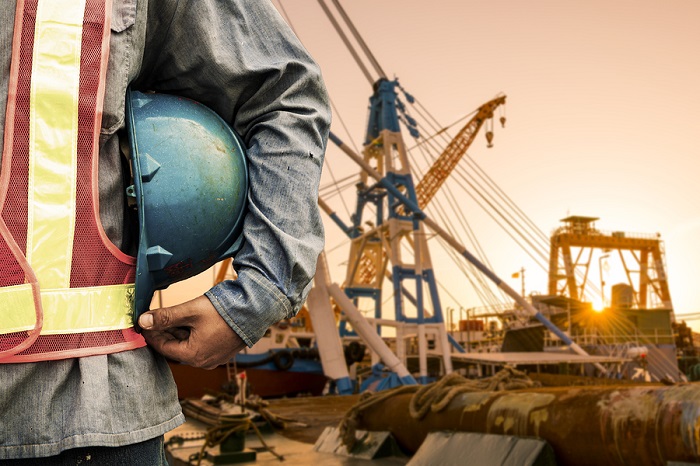In response to growing environmental concerns, the construction sector is turning to more sustainable techniques. One such idea is to deploy carbon-neutral strategies based on compressed air.
Compressed air is not a new concept in the industry, but its potential as a tool for carbon-neutral construction is being explored further. This method not only promises environmental benefits but also economic advantages.
Benefits of Implementing Compressed Air Strategies
One of the key advantages of compressed air is its clean nature. Unlike petrol or diesel engines, it does not generate hazardous gases. Reduced emissions help greatly to achieve a carbon-neutral building site. This is especially important in nations with severe environmental rules, where failing to comply can result in significant consequences.
Compressed air equipment often has a longer lifespan than traditional machinery. Its sturdy and lasting character makes it ideal for severe building sites. The lifespan of these devices decreases waste, which contributes to their ecologically beneficial status.
Economic gains should also be noted. While the initial cost of converting to compressed air may appear costly, the long-term savings can be significant. When combined with the potential financial benefits of carbon credits, the long-term economic rationale for compressed air techniques is impossible to deny.
It’s worth noting that this method may meet a wide range of building site demands. Compressed air systems may power a broad range of tools and equipment, including small drills and heavy-duty diggers. Thanks to technological advancements, compressed air can now be supplied with variable degrees of power and pressure, making it a flexible and adaptable energy source.
Challenges and Solutions in Adopting Carbon-Neutral Strategies
New technology inevitably brings with it a slew of new issues, and compressed air solutions in the construction sector are no exception. Design limits, high initial costs, and leak susceptibility are just a few of the challenges that construction businesses face when incorporating compressed air tactics into their operations.
Design limits present a unique problem. Most construction equipment runs on conventional fuels. The transition to compressed air systems necessitates a comprehensive revamp since they operate on fundamentally different principles. However, constructors should not be deterred by these obstacles. Instead, implementing a hybrid system that blends conventional and air-powered equipment can be a feasible option. This allows businesses to take a timid step towards using compressed air systems without entirely abandoning traditional techniques.
Another barrier to acceptance is the cost of upgrading to compressed air tools. Early upfront expenses are substantial, possibly straining the financial capabilities of building companies. However, it is important to mention that the long-term economic gains far outweigh the early expenditures. When viewed through the lens of a cost-benefit analysis, compressed air-based machinery and tools outperform traditional fuel-based counterparts in terms of lower operating costs, increased durability, and reduced maintenance requirements, providing a compelling case for the seemingly difficult transition.
Lastly, compressed air systems are often said to be prone to leaks which can drastically affect the energy efficiency and reliability of operations. However, this problem is efficiently countered by regular inspections and repairs. The provision for routine maintenance addresses the potential for leaks, ensuring high functionality and energy efficiency that epitomise carbon-neutral compressed air systems.
Future Prospects in Sustainable Construction
Sustainable construction holds significant promise for the future, driven by the growing awareness of environmental issues and the need for responsible resource management. One key prospect lies in the advancement of green building materials and technologies. Innovations such as high-performance insulation, recycled and low-impact materials, and energy-efficient systems are continually emerging. These advancements not only reduce the environmental footprint of construction but also contribute to enhanced building performance and durability.
Another crucial aspect is the integration of renewable energy sources in construction projects. The future of sustainable construction is likely to witness a surge in the use of solar panels, wind turbines, and other clean energy technologies to power buildings. This shift towards renewable energy not only reduces dependence on traditional energy sources but also promotes a more resilient and self-sufficient built environment.
Furthermore, the implementation of smart and eco-friendly design principles is a promising trend. Sustainable construction involves optimising building layouts for natural lighting, ventilation, and temperature regulation. Additionally, incorporating smart technologies like energy-efficient lighting, automated systems for energy management, and sensors for real-time monitoring can significantly enhance a building’s overall efficiency and sustainability.
Lastly, the increasing emphasis on circular economy principles in construction is a prospect that holds immense potential. This involves designing buildings and infrastructure with the end goal of reusing, repurposing, or recycling materials at the end of their lifecycle. By minimising waste and promoting a closed-loop system, sustainable construction can contribute to a more circular and resource-efficient industry, aligning with global efforts to achieve a more sustainable and resilient future.


